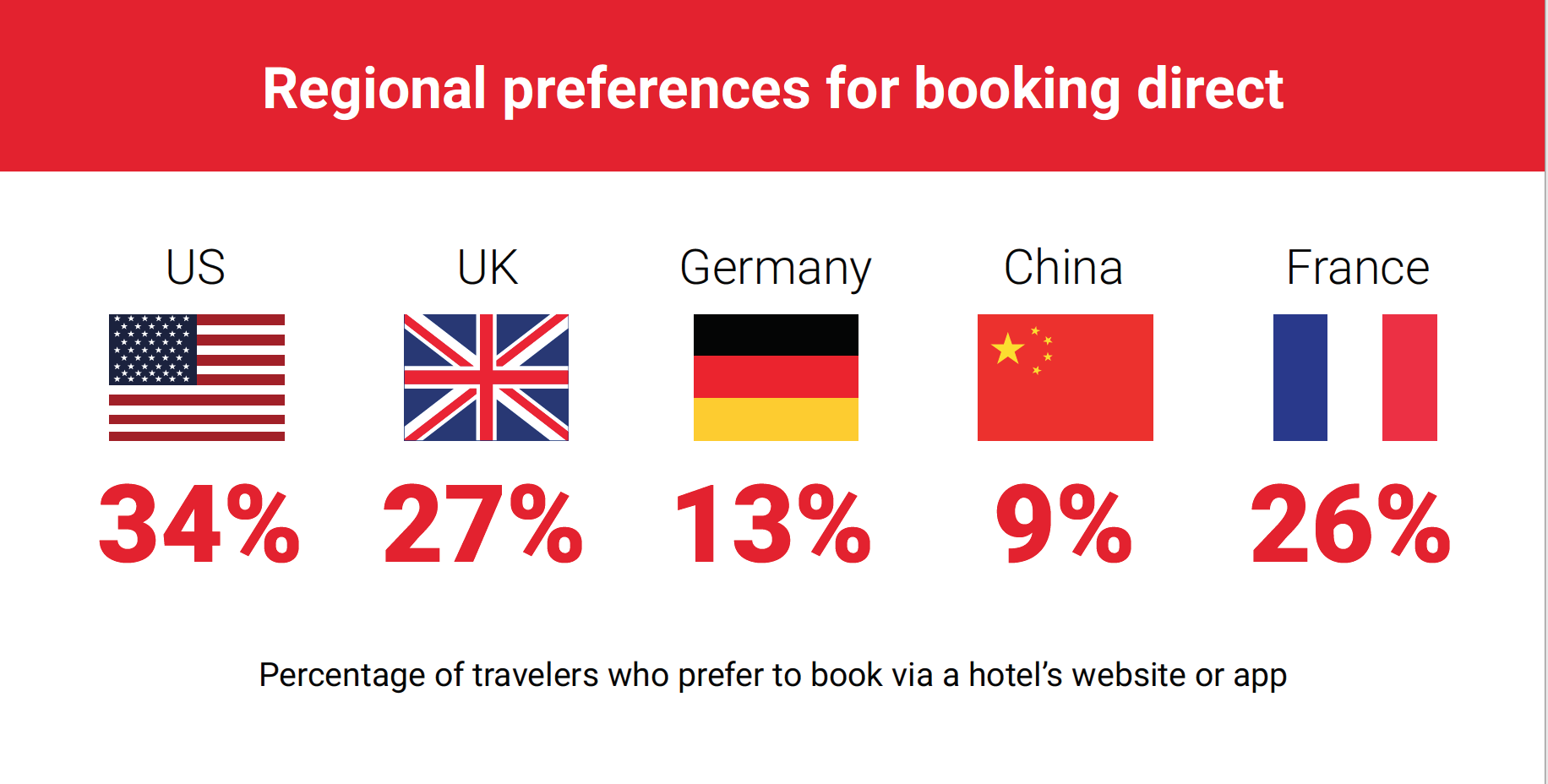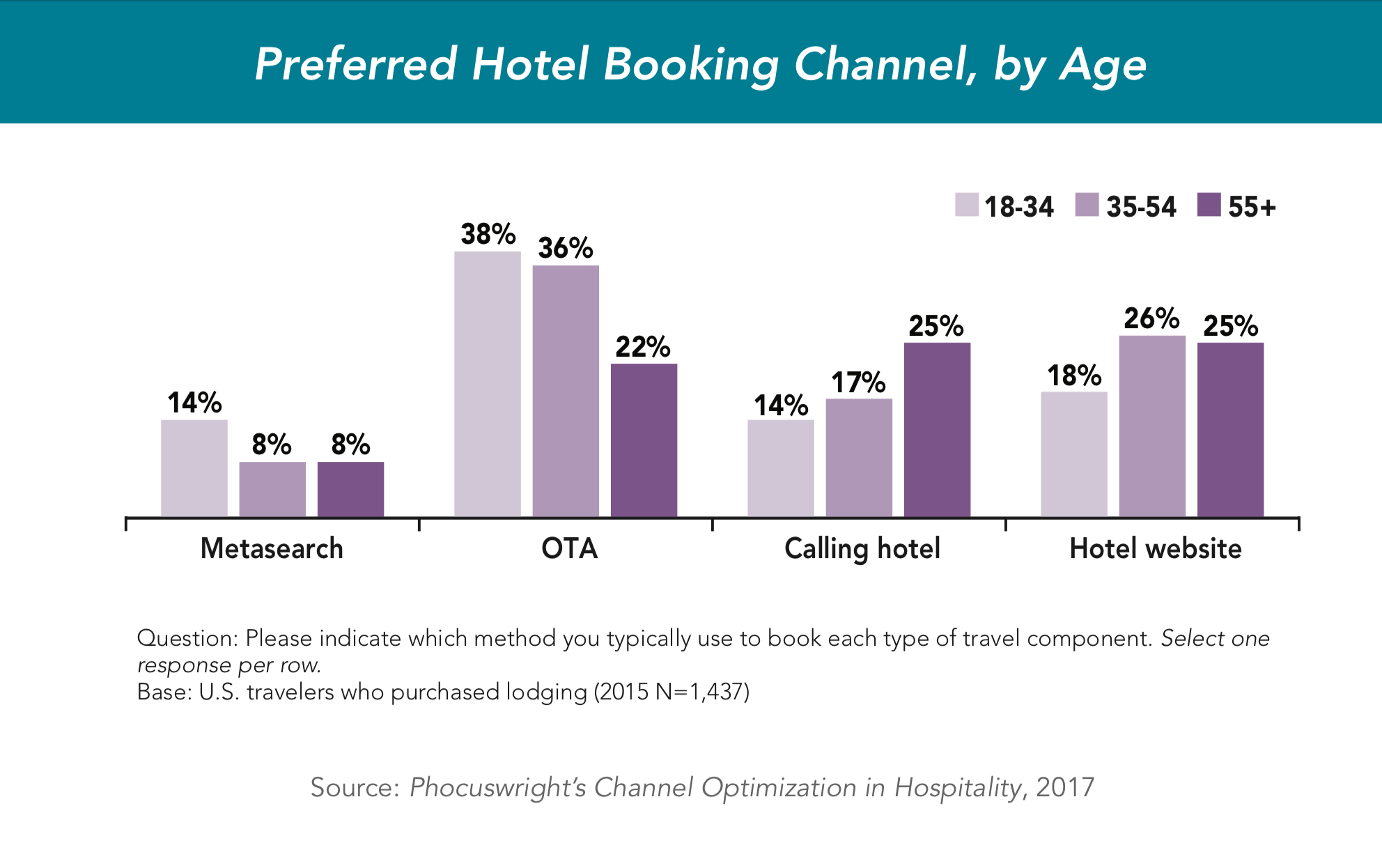The distribution strategy that led your hotel or chain to revenue growth last year won’t necessarily continue to be successful in the months ahead. And the strategy that led you to big wins in one part of the world may not translate well around the globe, even for the same brand and similar traveler demographics.
This is because many variables affect guests’ shopping and booking choices, including regional and cultural differences. While new technologies open up more opportunities for travel shopping, travelers’ willingness to embrace those channels varies by region as well as by demographic. At the same time, changes in economic and political environments also impact hotel guests’ travel needs and choices. These variables are constantly in flux.
These observations are among the key findings of our white paper produced in partnership with Phocuswright, Channel Optimization in Hospitality. In today’s ever-evolving marketplace, it’s better to see a hotel’s distribution strategy as part of a moving, changing playing field than as a stationary goal or target.
GUEST BEHAVIOR VARIES BY LOCATION
Different regional preferences show clearly in a Phocuswright survey of travelers: In the United States, 34 percent of travelers used a hotel website or app to book during their last leisure trip, while 27 percent of British travelers did so; in Germany, that number was 13 percent; and only 9 percent of Chinese travelers chose to book via hotel sites or apps, versus 26 percent of French travelers who booked via hotel websites or apps.

Meanwhile, 22 percent of Brazilian travelers booked their last leisure stay by calling the hotel, compared to 21 percent in the US, 17 percent in Germany, and only 12 percent in the UK. And while 39 percent of Chinese travelers booked their last trip on OTA websites or apps, only 20 percent of French travelers did so.
For further evidence of these regional variations, consider this data from Phocuswright’s 2017 Phocus Forward report on digital travel. These statistics highlight the differences in OTA versus supplier direct hotel bookings in different parts of the globe:
- At hotels in Europe, OTA bookings accounted for 69 percent of online hotel bookings in 2016, versus 31 percent through supplier direct channels. But in eastern European countries, OTAs saw 72 percent of online bookings versus direct channels’ 28 percent
- In Latin America, 69 percent of online bookings were made through OTAs versus 31 percent through direct channels
- Hotels in Asia-Pacific nations saw 72 percent of online bookings happening via OTAs, versus 28 percent made through online direct channels
There are many cultural and economic factors that may help explain these regional differences in booking behavior. In Brazil, the 2016 Rio Summer Olympics provided a boost to travel, but probably also changed the usual booking patterns those hotels were accustomed to seeing. For hotels in China, those patterns could reflect growing access to travel, but may also indicate travelers’ willingness to embrace new shopping and booking channels.
Meanwhile, business and leisure travelers in other parts of the world have more established shopping and booking preferences that differ more broadly along demographic lines, and which may be slower to change. For example, Phocuswright research found that OTAs are the booking channel preferred by 38 percent of travelers ages 18-34, followed by direct website booking (18 percent), metasearch (14 percent) and voice (14 percent). But among travelers 55 and over, the most-preferred means of booking are hotel websites (25 percent) and calling the hotel directly (25 percent), followed by OTAs (22 percent) and metasearch (8 percent).

OPTIMIZE YOUR CHANNEL STRATEGY: 4 KEY TAKEAWAYS
The lesson for hoteliers is that assessment of your channel strategies needs to take place often, with cultural, economic and regional variations in mind. After all, language isn’t the only thing that differs between your guests from different parts of the world. So, if you’re trying to attract more travelers from China, knowing that 91 percent of Chinese hotel shoppers visited an OTA website while shopping last year can help you plan your channel mix. Likewise, knowing that 68 percent of UK travelers visit metasearch sites, versus only 28 percent who visit hotel websites while shopping, can help you determine your direct-booking strategy.
Here are four easy ways hoteliers can start to leverage regional differences to optimize distribution:
- Identify your target guests’ countries of origin & channel preferences. Be sure you’re prioritizing the best-producing channels and optimize your distribution strategy based on your target guests’ top channel preferences.
- Concentrate on building guest personas. Remember, regional variations are just one factor that determines your guests’ choices – demographics are also important and should be considered as you create guest personas to guide your strategy.
- Know the channels your guests are shopping and optimize those experiences for maximum conversion. This is especially important in direct channels where you have total control over the experience.
- Track customer sentiment and behavior. Be sure you’re reading and understanding the signals that correlate with purchase intent for your guests – this will help you adjust your strategy to keep track of changing preferences and market conditions.
For more examples of how hotel distribution is more complex than ever, along with recommendations for crafting the ideal channel strategy for all parts of the globe, download your copy of the Channel Optimization in Hospitality white paper today.
This white paper will help you understand key regional differentiators, guest personas and market positioning, giving you goal-setting strategies that can help you better prioritize channels and plan for future growth.
